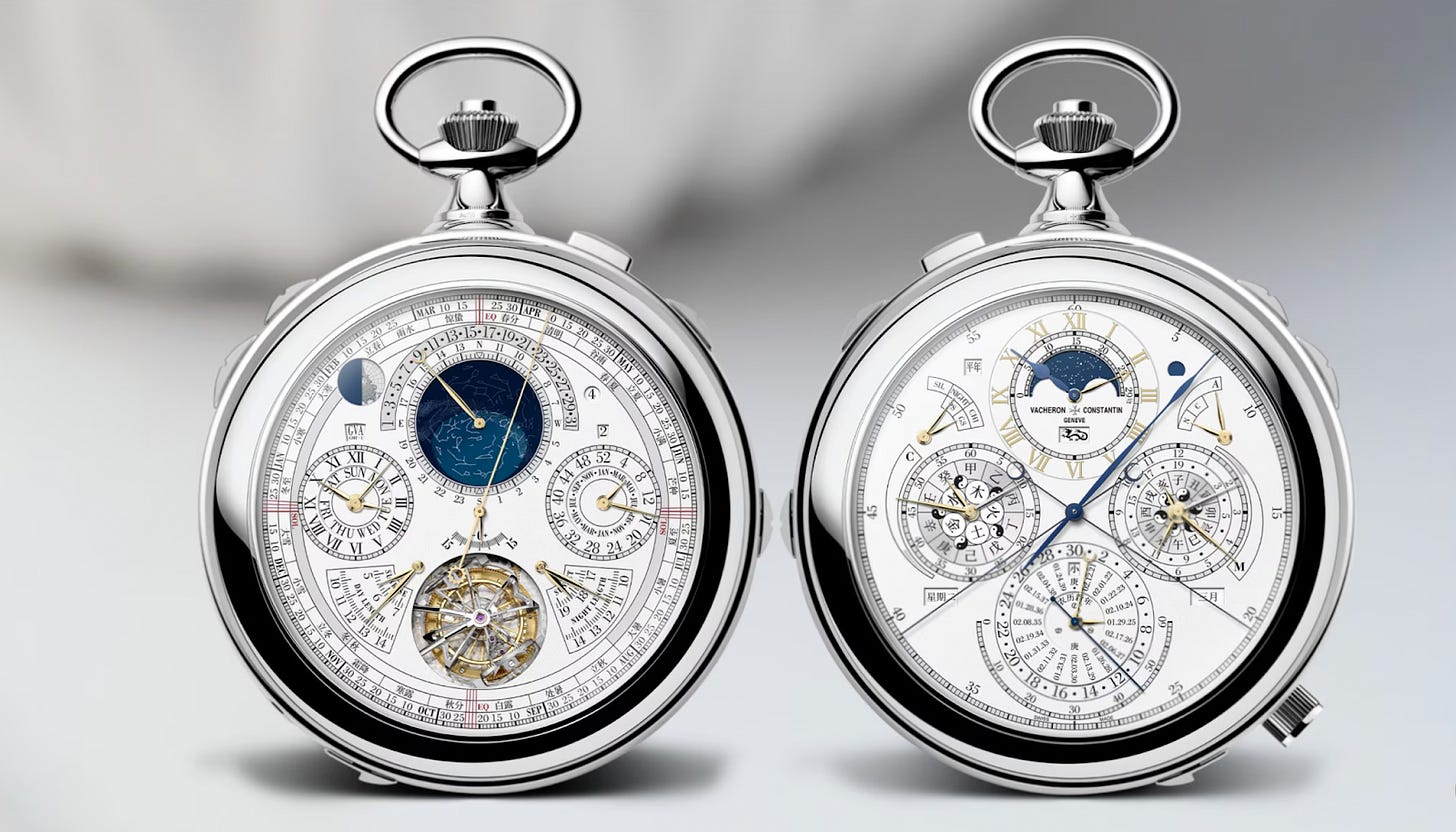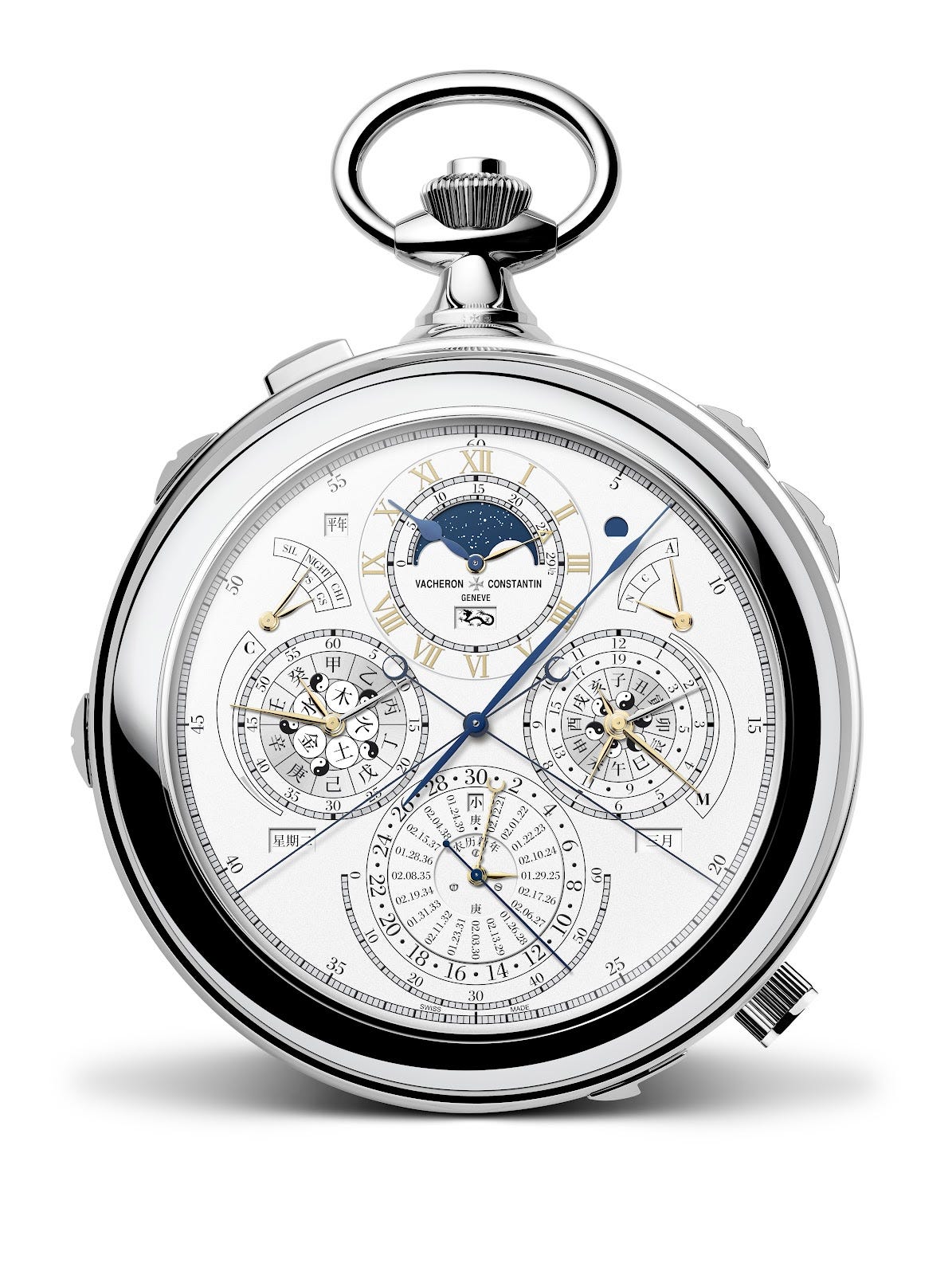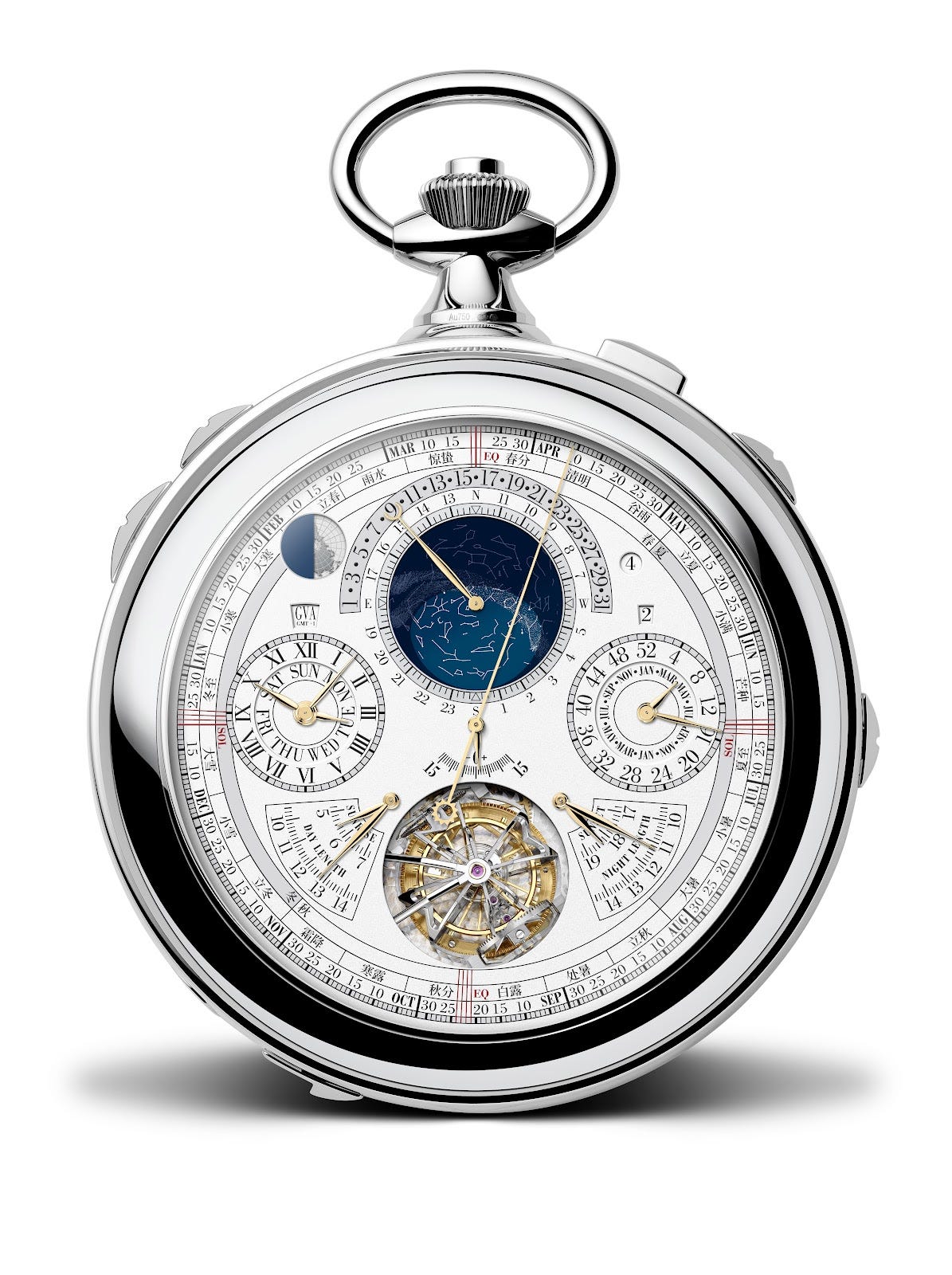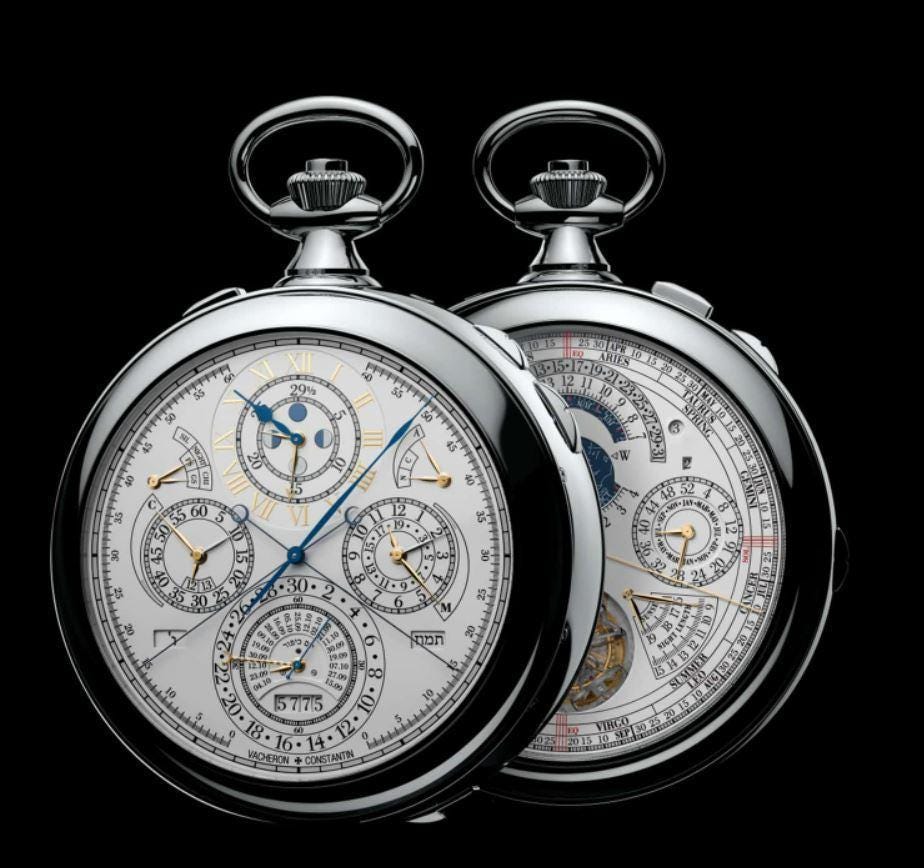At Watches and Wonders earlier this month, Vacheron Constantin presented the world's most complicated watch, the Les Cabinotiers - Berkley Grand Complication (see Note below for a definition of Grand Complication). This mechanical wonder comprises 63 horological complications and 2,877 components. And it surpasses the record of most complicated watch already held by the Maison with Reference 57260.
Similar in design to the Reference 57260 presented in 2015, the Berkley Grand Complication also features a genuine Chinese perpetual calendar, as well as a Grande Sonnerie with Westminster carillon, based on 5 gongs and 5 hammers. Its development required 11 years of work. Assembly alone required a whole year.
The front dial of the watch (Fig. 2) features the Chinese lunisolar calendar. This is a type of calendar that uses the cycles of the moon to determine months and the position of the sun relative to the Earth to determine years. Each lunisolar month begins with a new moon and ends with a new moon. At 6 o’clock, a subdial indicates the Chinese new year date, which fluctuates between January 21 and February 20, whereas at 12 o’clock we find the moon phase complication and the age of the moon indication. Under the moon phase subdial, a small aperture indicates the Chinese zodiac sign - the Dragon, currently.
Running hours, minutes, and seconds are also measured on the front dial, together with the split-seconds chronograph complication. The hours are measured with a regulator-type hand in a subdial at 12 o’clock, with roman numerals. The minute hand is central and also of a regulator type. Seconds are retrograde and measured at 6 o’clock against a “chemin de fer” track.
The dial in the back of the watch, the second dial, features a Gregorian perpetual calendar with retrograde date at 12 o’clock, the month subdial at 3 o’clock, and the day of the week subdial at 9 o’clock. The leap-year cycle is indicated in a small aperture at 1 o’clock.
A world time complication is featured on the left side of the dial: a small aperture at 10 o’clock shows the time zone selected (Geneva GMT +1, in Fig. 3) and the subdial below at 9 o’clock indicates the hours and minutes of the second time zone. A small circular disk representing the globe at 11 o’clock provides the indication of night and day. Completing the complications in the second dial are a sky chart at 12 o’clock showing the constellations visible in the Shanghai night sky, and a triple-axis tourbillon at 6 0’clock.
Both dials show consistency in their design and in the way the information is organized. Coloring is minimal, only used for the essential. There is no cluttering: considering the amount of information provided by the dials, they both maintain a high level of legibility.
Fig. 1 - Les Cabinotiers - The Berkley Grand Complication (back and front)
Fig. 2 - Les Cabinotiers - The Berkley Grand Complication (front)
Fig. 3 - Les Cabinotiers - The Berkley Grand Complication (back)
Vacheron Constantin Ref. 57260
The title of "the most complicated mechanical watch in the world" often varies depending on the criteria used to define "complicated” and “complication”. As of 2015, the title of most complicated watch ever made was owned by another Vacheron-Constantin timepiece, Ref. 57260, a pocket watch composed of no less than 2,826 parts and including 57 complications. The watch was introduced by Vacheron-Constantin in 2015 for the 260th anniversary of the Maison (see Fig. 4).
Fig. 4 - Vacheron-Constantin Ref. 57260
Three master watchmakers worked for 8 years to create this exceptional timepiece. It featured 57 complications grouped into astronomical, calendar, chronograph, and striking complications, which require 31 hands to visualize all the indications.
The watch claimed 10 patents and all of its 2’826 components were individually hand-decorated. Apparently, the Maison wanted to combine 36 complications in the watch, but once the project was started and it progressed, the watchmakers were able to increase the number of complications to 57. The 957 grams of savoir-faire and mechanical excellence are housed in a white gold 18-karat case of 98mm in diameter and 55.50mm in thickness.
Note: What is a grand complication?
To understand what a Grand Complication is, we must first explain what a horological complication is: any additional function that a watch has, in addition to the display of running hours minutes and seconds, is called a complication.
Below are five examples of horological complications often found in modern watches. Some watchmakers also include in this list the tourbillon and the ultra-thin movement, and refer to them as technical complications.
1. The Minute Repeater
2. The Split-Seconds Chronograph
3. The Perpetual Calendar
4. The Moonphase
5. The Tourbillon
6. The Ultra-thin Movement
A grand complication is created when two or more complications are combined in the same watch. For example, Audemars Piguet refers to a grand complication as one including a Split-Second Chronograph (a timing complication), a Minute Repeater (a striking complication), and a Perpetual Calendar (an astronomical complication). Often, this combination will also accommodate a moon phase complication and/or a tourbillon.
Wristwatches with complications in the double digits are a handful. This is the domain expertise of very few watchmakers. These timepieces are not created to be worn as a wristwatch, but rather to be collectable objects to be gazed upon, the rare times they are taken out of a safe.






